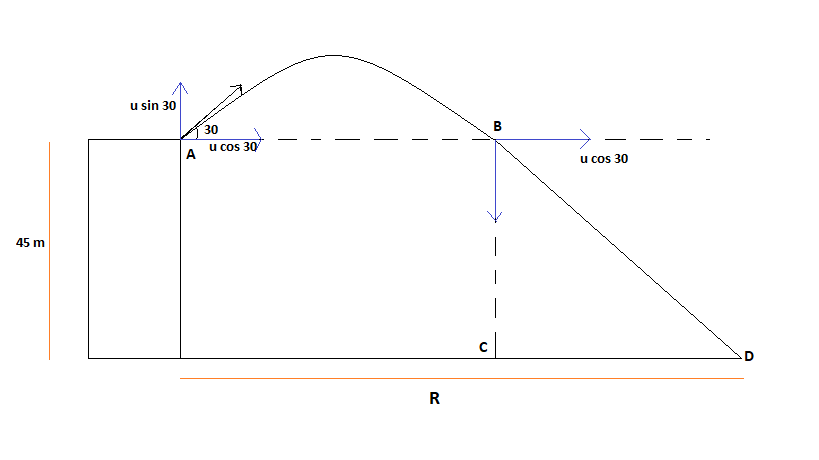A stone is thrown upward from the top of a building at an angle of 30° to the horizontal and with an initial speed of 20 m/s. The point of release is 45 m above the ground. How long does it take for the stone to hit the ground? What is the stone's speed?
What is the horizontal range of the stone? Neglect air resistance.
What is the horizontal range of the stone? Neglect air resistance.
1 Answer

The above diagram explains the motion of the stone.
As,the stone is thrown at an angle of 30 w.r.t the horizontal,its vertical component of velocity becomes
so,time taken by the stone to reach point
so,time taken to reach
Now,at point
so,the velocity with which it will vertically hit the ground can be calculated using
here,
so,
but during hitting the ground it also has a horizontal component of velocity,hence total velocity with which it hits the ground is
Now,while falling downwards from point
therefore,total time after which it will reach the ground will be
Now, in this
and we can also calculate the length of
so,range of the motion of the stone becomes

